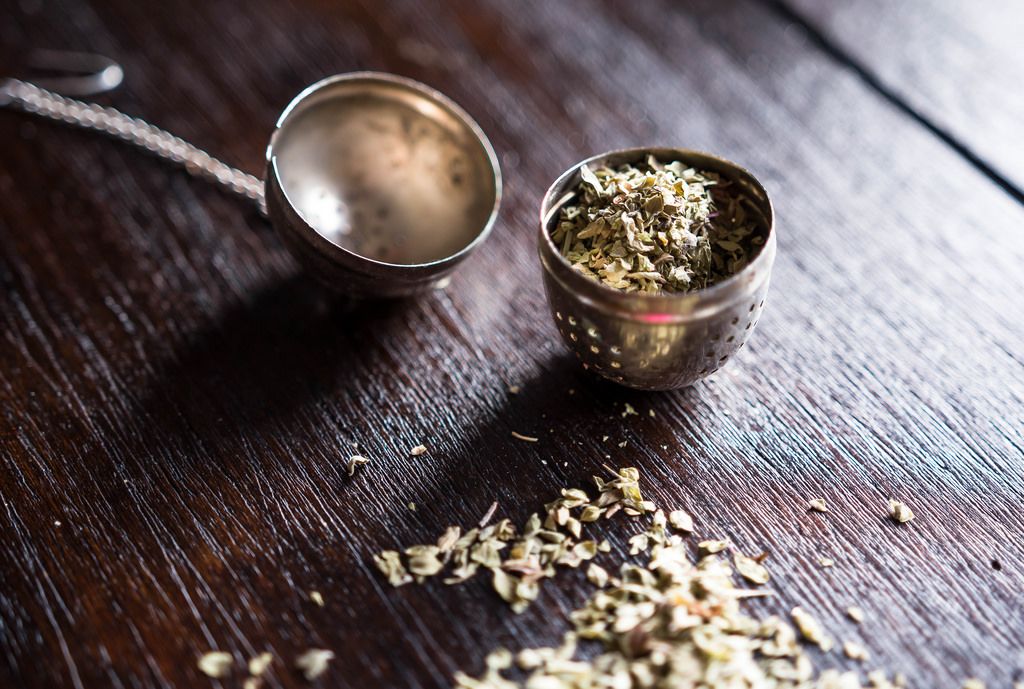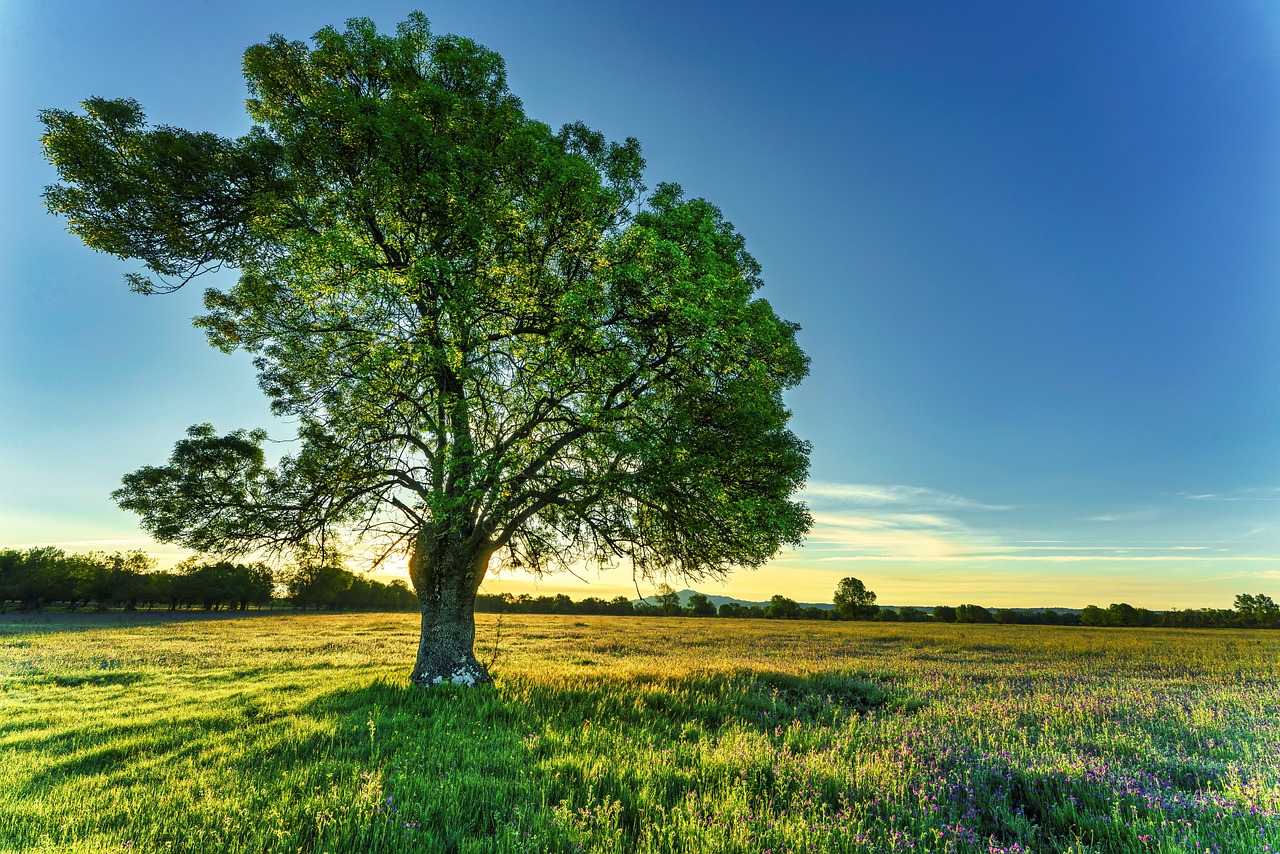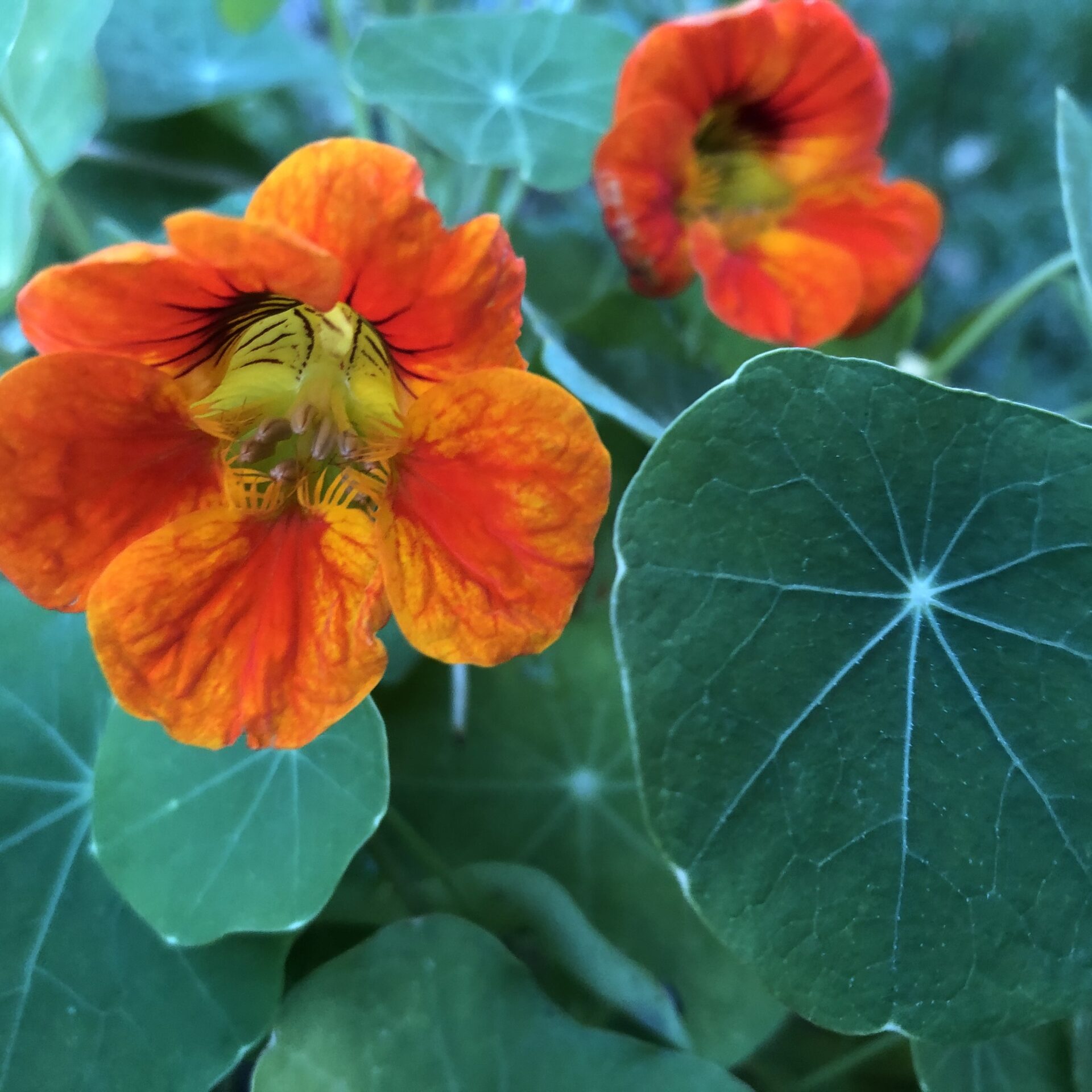Renaissance physician, botanist, and alchemist, Paracelsus, said “Everything is poison, there is poison in everything.”
“The danger of a poison is in the dosage”, he concluded.
There’s something very unique about the magick of a poison garden that people with either find fearsome or deadly attractive. Poisons have been regarded for both a deadly danger for evil potions or as a protective tool for curative measures. Just like light and shadow, a poison garden can connect with spiritual allies and deathly devils.
Essentially, anything that’s digested can be poisonous if it’s taken in large enough doses. As the old adage goes: “The dose makes the poison”,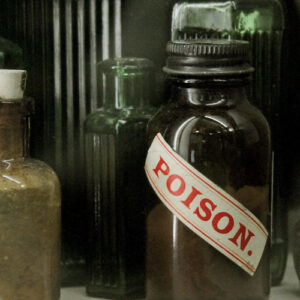 And there are many of the so-called poisonous plants that contain powerful, healing qualities. But as we learn from Paracelsus, it’s all about the dosage. While many people refer to poison as a dangerous substance, many more of these plants can offer us valuable insight into how we can heal and enlighten ourselves.
And there are many of the so-called poisonous plants that contain powerful, healing qualities. But as we learn from Paracelsus, it’s all about the dosage. While many people refer to poison as a dangerous substance, many more of these plants can offer us valuable insight into how we can heal and enlighten ourselves.
In fact, the very essence of the etymology of the word poison is magic potion.
From the Witch’s Garden to the Physick Garden, we can follow the roots of how plants have been prescribed and unlock their secrets. Even before the often cited and famed Roman and Greek physicians, herbalism was used for medicine, cooking, etc, but also for the elements for enhancing our minds and treating health. Herbalism has been with us since the dawn of time and connects us to ancient ancestors.
The murky world of poison plants has dominated our myths, legends and history, but don’t let that put you off, come take a walk down the poison path with us.
The Mystical Cycles of a Plant
Wise women, apothecaries, witches, herbalists…anyone who cultivate plants for their magic and medicine often have a special space dedicated to ‘the poisons’. An area dedicated to some of the power plants and holding a unique place in our hearts, minds and gardens.
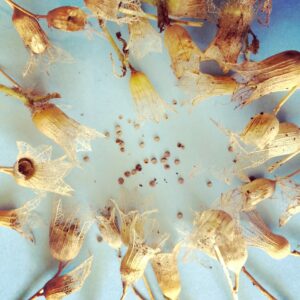 Sensory Herb Magic encourages the growing of plants; it is an essential aspect of the story. When you create a special opening for the witching herbs in your life and invite them into your green space and psyche, the plants are perceptive and respond, appearing as if out of nowhere. A spell can be cast with each and every seed germinated, an intention to draw peace and health to our planet.
Sensory Herb Magic encourages the growing of plants; it is an essential aspect of the story. When you create a special opening for the witching herbs in your life and invite them into your green space and psyche, the plants are perceptive and respond, appearing as if out of nowhere. A spell can be cast with each and every seed germinated, an intention to draw peace and health to our planet.
We Seed Sistas have been shown so many secrets and stories by the witching herbs simply by collecting their seeds, bringing them home to germinate and grow in our gardens or surrounding wild lands. Then comes the wonderment of watching the first leaves appear, the growth of the plants, sitting with them, listening to the whispers of the tales they tell through their rich and ancient folklore, weaving new narratives into the fabric of our lives and even the plants appearing within our dreams.
The Magickal Powers of the Seasons
In our modern world, we pause to reflect the gifts of nature and acknowledge her changing seasons. The wisdom of our witchy herbalists, women and apothecaries was governed by times and moons of the year and nurtured plants accordingly, often as a matter of life or death.
Herbalists have always look to harvest plants when they were at their most potent.
Come spring, witchy plants coming back from a hard winter are many and plentiful and magical gardeners gather the fresh sweet spring greens such as dandelions (Taraxacum officinale) and chickweed (Stellaria media) for food magic and medicine and also discover if a cold winter killed off any precious perennials.
Midsummer is a powerful time of the year as it marks the beginning of three months of plenty. Herbs such as lavender, sage, mugwort, St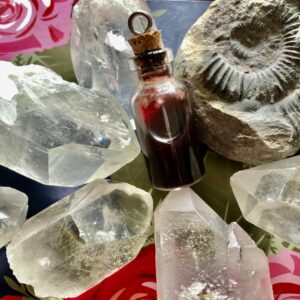 John’s Wort have strong connections with healing powers at this special time. During the full summer moons, the above ground parts of the plants (ariel parts) are harvested for tinctures, oils and teas to take advantage of the maximum potential received by nature and the cosmic forces.
John’s Wort have strong connections with healing powers at this special time. During the full summer moons, the above ground parts of the plants (ariel parts) are harvested for tinctures, oils and teas to take advantage of the maximum potential received by nature and the cosmic forces.
Farmers have been bringing in their crops since Lammas (1 August) it is traditionally a busy time. In fact, it’s our busiest time of the whole year, to forage the hedgerows for herbs, berries, fruits and fungi, and preserve them all in alcohol, oils, with sugar as syrups and also drying them – our homes become fast paced production plants with each and every surface covered with stocks, medicine and potion materials.
Winter being the time to hunker down at home, inviting the herbs in their various preserved forms to liven food and treat the diseases of the cold dark months, whilst we turn inwards and plot and plan the next cycles.
Magick Poisons from the Garden
History has weaved mythical imagery of poison into our perceptions of how it was used, from potions to spells. From Hercules and Homer’s poison arrows to the poison death of Cleopatra and the suicide of Socrates from drinking a hemlock potion. Laudanum, from the opium poppy, was a drug of choice for the romantic poets and enlightenment, despite its addictions.
Similarly, wisteria, hydrangea, daffodils, tulips, foxgloves, rhododendrons, the leaves of rhubarb ….so many common plants have toxic properties to humans, animals and plants. However, there are many of these ‘menacing’ plants that bloom or can be nurtured in our gardens, have magickal elements that are immersed in folklore and medicine. Here are just three of our favourites, all of which are best only prescribed by qualified medical herbalists.
Belladonna
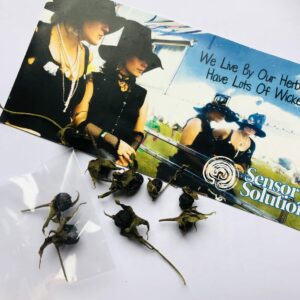 Wherever there are witches’ gardens, you’ll hear of the legends and myths of Belladonna, otherwise known as Deadly Nightshade. She’s renowned for the jet-black, shiny berries, so enticing and super attractive, berries of temptation, devil’s cherries. Just observing them and wondering at them is enough. Inside the obsidian balls are black round seeds in gelatinous, deep purple fruit. Belladonna is a perennial, she will grow each year, returning from the same root stock. The leaves are oval-shaped, un-toothed, and smooth.
Wherever there are witches’ gardens, you’ll hear of the legends and myths of Belladonna, otherwise known as Deadly Nightshade. She’s renowned for the jet-black, shiny berries, so enticing and super attractive, berries of temptation, devil’s cherries. Just observing them and wondering at them is enough. Inside the obsidian balls are black round seeds in gelatinous, deep purple fruit. Belladonna is a perennial, she will grow each year, returning from the same root stock. The leaves are oval-shaped, un-toothed, and smooth.
Belladonna flowers are like mauve bells that curl back at the entrance. And these are the flowers that give way to five green sepals on which the black berries sit. The whole plant can be up to 1.5metres tall depending on where it grows.
You may see Belladonna growing in fields or at the roadside and is just like other members of the Solanaceae family in garden veggies, such as tomatoes, aubergines and peppers.
Despite it being a poisonous plant, its roots and leaves contains essential alkaloids. Used appropriately, it can block out the nervous systems functions and is used as a painkiller ointment for arthritis, sciatica, joint and nerve pain. And now modern uses have developed into exploring it to treat Parkinson’s disease.
Lily of the Valley
Lily of the valley enjoys cooler temperatures hence its affinity for woodlands. They are perennial plants that loves to spread their leaves, so be aware that if you’d like to plant these cute little bells, they will spread fast. Consisting of a rhizome to start, choose a spot that has well-drained soil and shade. When the tiny bells bloom in May, you will be graced with a lovely, sweet fragrance. Later, the flowers turn to small berries. From green to orange to red and then a shriveled brown, the berries can be used for planting more plants. Just make sure you are doing it in the fall when the plant is dormant. You can even dig up a rhizome and grow it inside during the winter to welcome in the beauty of life during the colder times!
In western herbal medicine and homeopathy, Lily of the valley, or convallaria majalis, is applied for ailments of the heart. Specifically for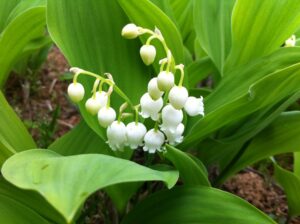 weak heart beats and heart failure. However, dose matters as this seemingly sweet plant can be very toxic to the heart in larger doses, so this medicine is carefully regulated and should only be administered by a trained medical herbalist.
weak heart beats and heart failure. However, dose matters as this seemingly sweet plant can be very toxic to the heart in larger doses, so this medicine is carefully regulated and should only be administered by a trained medical herbalist.
In Eastern herbal medicine, Lily of the Valley (or Ling Lan) is also applied to strengthen and support the heart, as well as promote urination (diuretic) and prevent infection. It is mentioned that medicine from Lily of the Valley will soften any deposits that disrupt arteries, joints, and muscles. Lily of the Valley was also traditionally used to support the brain. Nicholas Culpepper, an English botanist and herbalist, mentions that it can help with memory and when distilled in wine it can restore speech.
Mandrake
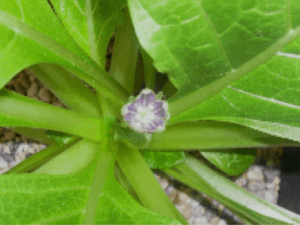 Mandragora, commonly known as Mandrake, (and also called Satan’s Apple), will take a patient gardener to sowing these magickal seeds. Mandrake plants bloom in spring with divine blue and white blossoms rising from the centre of the plant. The Mandrake foliage is wrinkled and crispy and can grow up to 40 cm long. In late summer, the plants create gorgeous, inedible red-orange berries.
Mandragora, commonly known as Mandrake, (and also called Satan’s Apple), will take a patient gardener to sowing these magickal seeds. Mandrake plants bloom in spring with divine blue and white blossoms rising from the centre of the plant. The Mandrake foliage is wrinkled and crispy and can grow up to 40 cm long. In late summer, the plants create gorgeous, inedible red-orange berries.
Mandrake Root often resemble a human figure and can grow up to one metre long. When the root is dug up, it was once believed that unless you covered your ears, the startling shriek unleashed by the powerful rhizome was so powerful that it killed anyone who heard it. The poisonous roots and leaves contain alkaloids that can cause vomiting, hallucinations and diarrhea.
Historically, it belongs to tradition folklore and the rich tapestry of herbal medicine; in particular, its infusion into witches’ flying ointments. In addition to hallucinogenic and spiritual rituals, the properties of Mandrake have been prescribed as an aphrodisiac, to promote sleep, boost fertility and alleviate pain.
Examples of Poison Gardens
Physic or apothecary gardens are where medicinal plants are grown and historically, were generally located near a doctor’s, herbalist’s or shaman’s dwellings. Essentially, these original apothecary gardens were grown for medical students to understand about the therapeutic effects of the plants they prescribed. During the 1700s, The Physic Gardens at Chelsea was the leading the world for the growth, distribution and exchange of medicinal plants. At the time, this was spurred on by the British Empire’s economic exploitation of plants at the expense of enslaved and indigenous people. However, a modern-day historical walk here is addressing these stories in an attempt to take accountability for the past.
Perhaps the most famous poison garden in the UK today has been created by the Duchess of Northumberland at Alnwick Castle. Drawing inspiration from the medieval, medicinal gardens, the hundreds of poison plants grown here tell the unique stories of the evolutionary roots of medicine. One of the aims of growing such an abundance of shrubs, plants, weeds and herbs is to educate people on their deadly properties while highlighting how we perceive the idea of ‘poison’.
Creating the Magick of a Poison Garden
Getting acquainted with all plants is one of the most powerful acts of magic you can perform. You enter the world of intuitive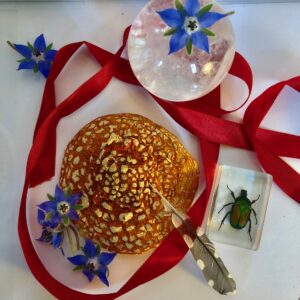 communication. All herbs hold medicinal gifts and all plants are teachers. Some of our floral family shout louder to us humans, exerting stronger physical effects. These have a greater ability to transport us to other realms and to open pathways both ancient and new.
communication. All herbs hold medicinal gifts and all plants are teachers. Some of our floral family shout louder to us humans, exerting stronger physical effects. These have a greater ability to transport us to other realms and to open pathways both ancient and new.
Growing and planting out herbs is a sacred form of creativity. A spell can be cast with each seed germinated, an intention to draw peace and health to our planet. The more time you spend deeply observing and working with plants, the deeper your friendship with them can grow, the more familiar their character becomes and ultimately the more their medicine reveals itself to you.
If the magick of a poison garden conjures up inspiration, read more about plant magic in our book….
Poison Prescriptions – power plant magic, medicine and ritual


